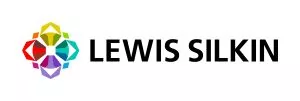- within Technology topic(s)
- with readers working within the Banking & Credit, Media & Information and Law Firm industries
- within Cannabis & Hemp, Law Practice Management and Privacy topic(s)
- in United Kingdom
As technological developments evolve, the legal landscape is keeping pace. Courts and regulators face new challenges, and disputes are rising as technology raises novel issues. We examine key drivers of technology disputes, legal solutions and emerging trends in tech litigation.
Drivers of disputes
In a rapidly evolving sector, there are multiple reasons for the generation of legal disputes. Businesses across all sectors are embedding advanced systems into mission-critical functions, often for the first ttime and at striking speed.
In this environment, a mismatch between expectation and delivery can easily occur. Complex solutions demand equally intricate contractual architecture, and particularly where bespoke solutions are being built to meet customer demands, consideration of risk allocation is key. If technology fails to perform, the resulting damage can be significant Parties that never envisaged a trip to court may suddenly find dthemselves facing high-value proceedings.
What we're seeing
Duran Ross, Dispute Resolutions Partner, Lewis Silkin
"Recent trends we have seen in the sphere of technology related disputes include parties seeking to extricate themselves from fixed term contracts as the result of strategic reviews and general cost cutting. There also appears to be a greater willingness of parties to engage properly with disputes and seek to resolve them at the pre-action stage thereby avoiding the need for issued proceedings. This is in part due to concerns regarding the cost of pursuing litigation as well as the public nature of court proceedings."
Alongside this, the rapid development of technology is raising questions for parties and the courts to grapple with within the existing legal framework and consumer action is playing a part in increasing claim volumes.
Tech litigation in the High Court
Over the past five years, the number of technology-related disputes has gradually increased, with the largest number of claims unsurprisingly involving technology, media, and telecoms entities, but also inpiduals, according to High Court data. Disputes often revolve around common issues such as contractual disagreements, competition claims, breaches of statutory duty, and intellectual property conflicts. The frequency and complexity of cases in this sector are set to increase, reflecting the intricate nature of modern technology and its pervasive role in business operations.
Judges must be equipped to manage cases of technical complexity and large data volumes. The Technology and Construction Court in England and Wales, with its specialist judges, has established itself as a forum of choice, and is seeing an increase in software and IT infrastructure claims. Of key importance in these cases is the ability of opposing experts to translate dense technological detail for the benefit of the court, and the court's ability to appropriately case manage and adapt to the needs of the parties.
The role of Alternative Dispute Resolution
Arbitration in the technology sector is also on the rise. Approximately six per cent of the LCIA's annual caseload now originates in the sector, a proportion mirrored by the ICC. Arbitration's allure is clear: parties may select a tribunal of specialists experienced in the precise science or code at issue; confidentiality shields trade secrets and tech know-how; and procedural flexibility allows parties to adapt to the requirements of the case at hand. Mediation is also well-suited to the resolution of tech disputes for similar reasons.
Emerging trends and future outlook
Disputes arising out of artificial intelligence issues are set to rise as adoption accelerates, with claims that AI applications failed to perform as promised or have encroached upon intellectual property particularly likely. Cryptocurrency litigation will continue to surge in tandem with the mainstreaming of digital assets, bringing novel jurisdictional and enforcement challenges. More broadly, commercial disputes are increasingly likely to feature a technological dimension as a matter of course, simply because technology is now woven into the fabric of everyday business operations.
Technology solutions
Paradoxically, the very tools that generate disputes can also streamline their resolution. Law firms sand courts are deploying AI to automate disclosure, enhance document review accuracy and generate documents. Online dispute resolution platforms powered by AI are available for quick and cost-effective dispute resolution, and rule-making bodies - judicial and arbitral alike - are publishing guidelines designed to harness technological advances.
The content of this article is intended to provide a general guide to the subject matter. Specialist advice should be sought about your specific circumstances.



